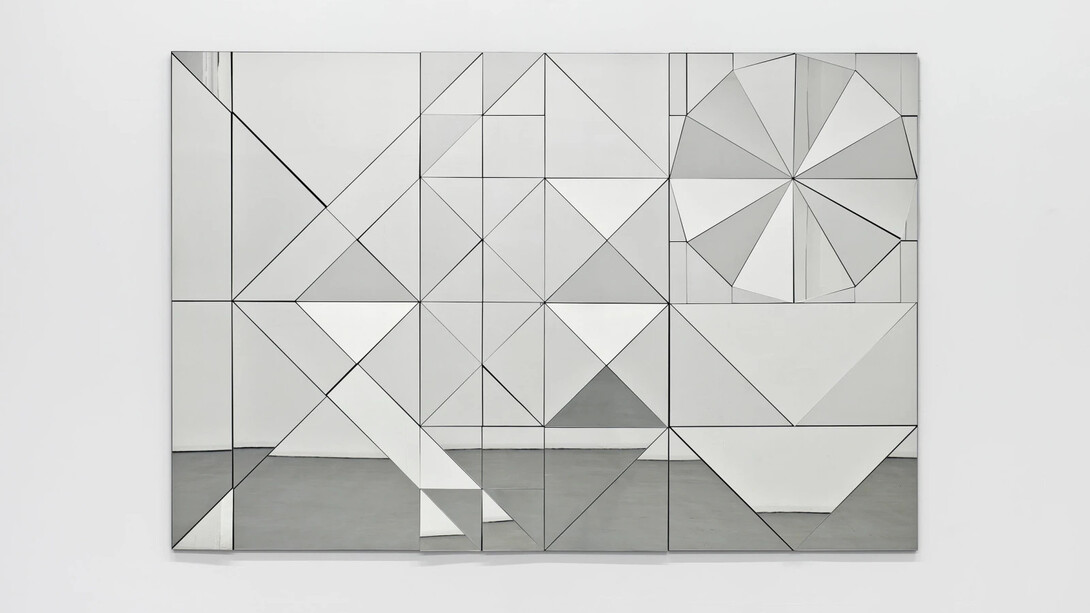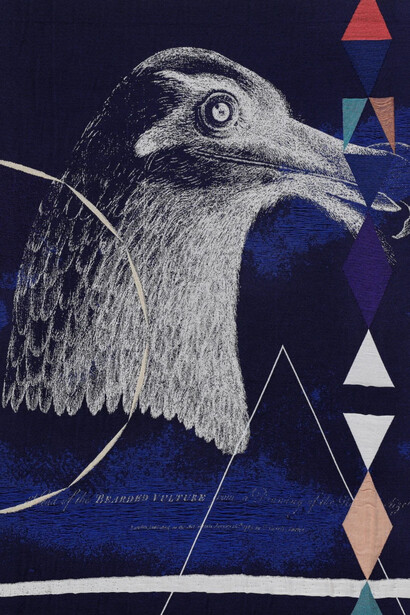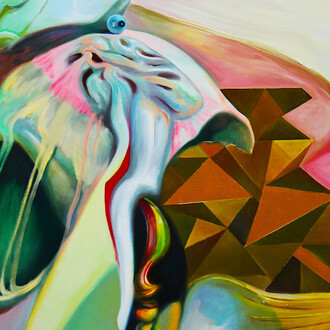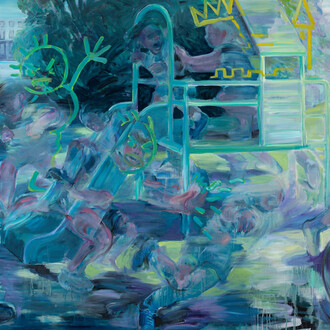Ousted from that warm bed
We are a dream they dream.
Their eyelids keep the shade.
No harm can come to them.
We cast our skins and slide
Into another time.(Sylvia Plath, The sleepers)
Marianne Boesky Gallery is pleased to present A personal unit, an exhibition of new work by Claudia Wieser (b. 1973; Freilassing, Germany). For her third solo exhibition, Wieser transforms the gallery into a stage for examining shifts in perception of time, place, and self.
Wieser’s foundational drive is space—how it is created, how it is articulated, how it is experienced. For A personal unit, Wieser began with the space, drawing on the notion of gesamtkunstwerk—the German term for a “total work of art”—to create an immersive experience comprising elements from across her wide-ranging, multi-faceted practice. Operating in a rich historical and architectural legacy, Wieser draws upon her deep knowledge of painting, her apprenticeship as a blacksmith, and her experience in set design to dissolve hierarchies of art and craft and distinctions between abstraction and figuration, introducing a stark shift in atmosphere and reminding viewers of their shared humanity.
The various elements that make up A personal unit all draw on the distinctive visual motifs characteristic of Wieser’s practice. Along one long gallery wall, Wieser layers antique photographs sourced from the archives of the Metropolitan Museum of Art, a dramatic still from the 1996 film The battle of Algiers, a 1655 Zurbarán painting, and geometric motifs adapted from her drawings and ceramic tile sculptures into wallpaper. Gilded drawings, steel, copper, and ceramic adorned mirrors, and woven tapestries occupy the remaining walls. In the meticulous, colored-pencil and gold-leaf drawings—larger in scale than previous drawings—the artist’s hand is readily evident as her delicate mark-making processes coalesce into radiant, meditative compositions. With her mirrors—collaged panes of shaped glass, adorned, at times, with colorful, hand-painted ceramic tiles—Wieser renders the viewer an active participant in the installation, reflecting the other work in the exhibition and fracturing the viewer’s own reflection. The tapestries, which Wieser made in collaboration with professional weavers in the Netherlands, operate according to the laws of painting, each of the thousands of threads akin to a brushstroke on canvas. A freestanding, four-part tessellated sculpture occupies the center of the gallery. Fit together, the modular sections form a multi-level stage or seating area covered with richly colored, geometric patterning on hand-painted ceramic tiles. Pulled apart, the sculpture reveals hand-etched drawings in the mirror-polished steel sides where the four sections fit together. The work will be repositioned weekly throughout the exhibition, allowing for viewers to experience the dynamic potential of the work.
A personal unit takes its title from abstract painter Amy Sillman. “I used to always ask my students,” Sillman once said, “‘What is your unit? There’s an atom, there’s an inch, there’s an hour, there’s a day, there’s a hand, there’s a year. What is your base unit?” For Sillman, every artist’s unit is something completely different—perhaps a measurement or perhaps something more abstract or conceptual: trouble or anger or chaos or something, perhaps, unnamed but deeply felt. Whatever that base unit is, it forms the continually evolving foundational grammar that governs an artist’s visual language, the driving force that imbues their work with life.
Wieser’s entire enterprise is formed of small units: square tiles, mirror shards, pencil strokes, woven threads, which, en masse, coalesce into rich, meditative compositions, becoming more than the sum of their parts. The base unit of Wieser’s work—her true driving force—is something far more personal. The apparent geometry of Wieser’s compositions belies the artist’s interest in the poetic foundations of humanity—history and politics and the themes that transcend time and place: love, power, oppression, competition, morality, honor, death. As a total work of art, A personal unit provides a rich window into the human experience—and the lineage of making in which she finds herself: her embrace of geometric forms and modularity gestures to modernism, her the painterly brushstrokes and careful, hand drawn lines offer evidence of the artist’s hand at work, the tight weave of the tapestries nod to the lineage of craftsmanship.
Wieser’s desire to immerse viewers in her spaces and alter their perception of time and place—even for a moment—is perhaps best encapsulated in the wallpaper that lines one long wall of the gallery. Wieser borrows its title, We are a dream they dream, from Sylvia Plath’s 1960 poem The Sleepers, a wistful, dreamlike meditation on notions of escape. Collaging this found imagery—Zurbarán’s soft drapery, a sweet young girl carved in classical relief, the theatrical chiaroscuro of old-school artifact photography, a windswept desert landscape—Wieser lends the installation a sense of history and drama. Mirrored around the gallery—and interacting with the fractured reflection of our own bodies—this imagery invites us to cast our skins, as Plath writes, and slide into another time.
















